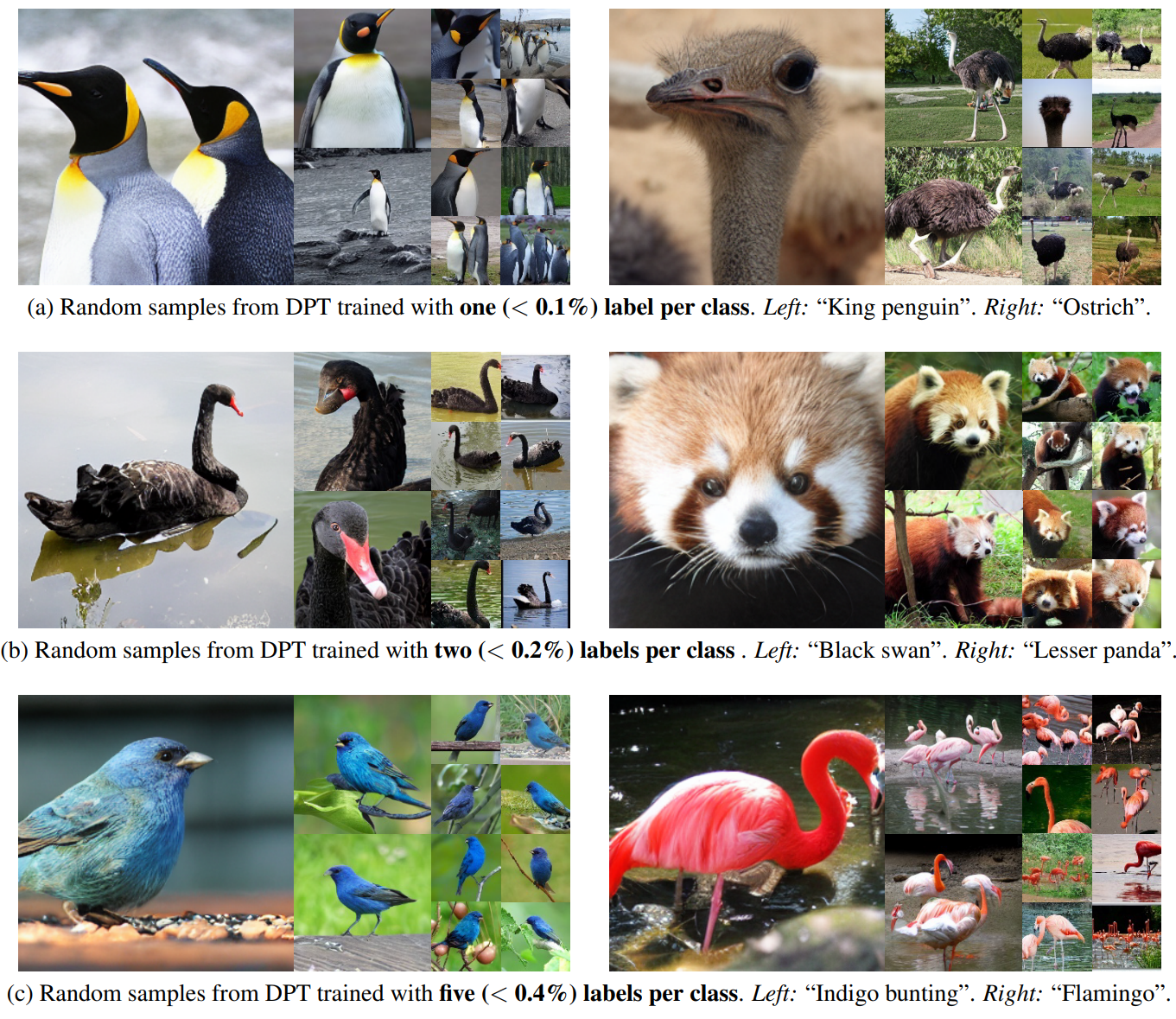Diffusion Models and Semi-Supervised Learners Benefit Mutually with Few Labels
In an effort to further advance semi-supervised generative and classification tasks, we propose a simple yet effective training strategy called dual pseudo training (DPT), built upon strong semi-supervised learners and diffusion models. DPT operates in three stages: training a classifier on partially labeled data to predict pseudo-labels; training a conditional generative model using these pseudo-labels to generate pseudo images; and retraining the classifier with a mix of real and pseudo images. Empirically, DPT consistently achieves SOTA performance of semi-supervised generation and classification across various settings. In particular, with one or two labels per class, DPT achieves a Fr\'echet Inception Distance (FID) score of 3.08 or 2.52 on ImageNet 256x256. Besides, DPT outperforms competitive semi-supervised baselines substantially on ImageNet classification tasks, achieving top-1 accuracies of 59.0 (+2.8), 69.5 (+3.0), and 74.4 (+2.0) with one, two, or five labels per class, respectively. Notably, our results demonstrate that diffusion can generate realistic images with only a few labels (e.g., <0.1%) and generative augmentation remains viable for semi-supervised classification. Our code is available at https://github.com/ML-GSAI/DPT.
PDF Abstract NeurIPS 2023 PDF NeurIPS 2023 Abstract


 CIFAR-10
CIFAR-10
 ImageNet
ImageNet